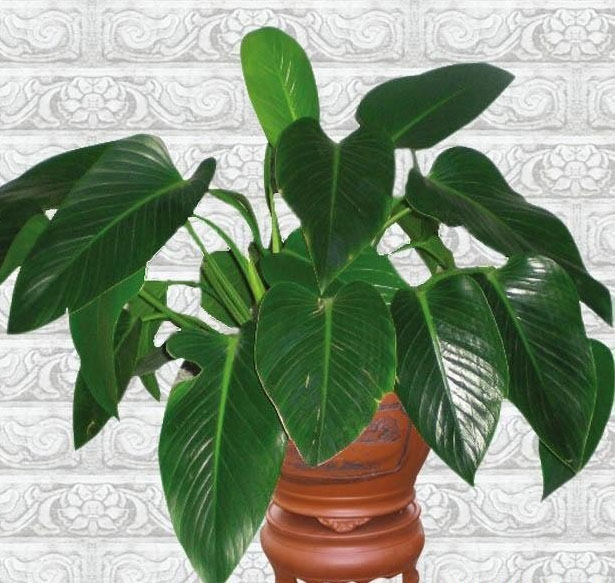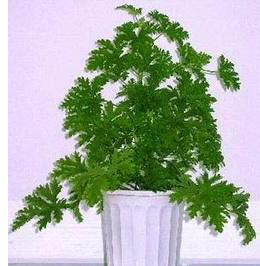Culture and maintenance methods of Golden Diamond (Velvet)
Introduction to the culture and maintenance methods of golden diamond (vine green velvet): Golden diamond and Douban green are a species and genus. Golden diamond, also known as golden diamond vine green velvet, is a more popular indoor foliage plant in recent years. It is arranged indoors, generous and elegant, rich in tropical rain forest atmosphere.
Maintenance management:
The golden diamond prefers a warm, moist semi-shady environment, but the basin soil should not be too wet. Keep the micro-tide in a dry state; water once every two weeks in winter and every day in summer. Don't let the summer sun expose it, or the leaves are prone to scorch. Put the plant in a bright place with thin shade or no direct sunlight.
Watering too often in winter will easily lead to fallen leaves and rotten stems. Golden diamond fear the cold, avoid strong light, the suitable temperature for growth is 20 degrees Celsius ~ 30 degrees Celsius, about 10 degrees Celsius begins to grow. The requirement of soil is not strict, it is better to grow in sandy loam rich in humus and good drainage, and potted soil is often mixed with peat and perlite to prepare nutrient soil. Should be placed in the semi-shade, summer to avoid direct sunlight, to prevent burning leaves.

Keep the soil moist and avoid being too dry during the growing period. When the air is dry in summer and autumn, water should be sprayed to keep the plant moist and cool. Like fertilizer, apply fertilizer and water 2 or 3 times a month during the peak growth period, avoid partial application of nitrogen fertilizer, otherwise the petiole will be long and weak, not easy to stand upright, affecting the ornamental effect. Golden diamond is afraid of cold, and the overwintering temperature should not be lower than 5 degrees Celsius.
How to raise golden diamond vines and green velvet? The culture method of golden drill vine green velvet
[FAQ] how to raise golden diamond vine green velvet?
[expert answer] Golden diamond vine green velvet, also known as golden diamond flower, is a perennial evergreen herb, is a very common indoor foliage plant. The leaves of golden diamond vines and green velvet are thick and full of lustre, which has a good effect of purifying the air and can absorb harmful substances in the air, so it is loved by flower lovers. So, how to raise golden diamond vines and green velvet? Now the culture method of golden drill vine green velvet is introduced as follows.
Picture: Golden diamond vine green velvet
I. Culture environment
Golden drill vine green velvet likes warm and humid semi-shady environment, afraid of cold and avoid strong light, so it is suitable to grow in sandy loam soil rich in humus and good drainage. The suitable temperature for growth was 20 ℃ ~ 30 ℃, and it began to grow at about 10 ℃.
II. Culture soil
The golden drill vine green velvet is not strict to the soil, it is better to grow in the sandy loam rich in humus and good drainage, and the potted soil is often mixed with peat and perlite to prepare nutrient soil. Should be placed in the semi-shade, summer to avoid direct sunlight, to prevent burning leaves. Keep the soil moist and avoid being too dry during the growing period. When the air is dry in summer and autumn, water should be sprayed to keep the plant moist and cool. Potted plants can use peat soil, rotten leaf soil, garden soil and river sand as substrate. When planting, add a small amount of mature farm manure as base fertilizer. Avoid bright light in summer to avoid brown spots and yellowing of leaves.
III. Fertilization
Golden drill vine green velvet is more fond of fertilizer, fertilizing water 2 or 3 times a month during the peak growth period, avoid partial application of nitrogen fertilizer, otherwise the petiole will be long and weak, not easy to stand upright, affecting the ornamental effect. The method of plant division can be used for propagation. at present, tissue culture is widely used for mass propagation.
Picture: Golden diamond vine green velvet
Fourth, watering
Watering is best carried out when the surface of the basin soil is dry, and it can be kept moist during the high temperature in summer. If the ambient temperature is lower than 15 ℃ in winter, it needs to be watered alternately.
5. Lighting
Like the light and avoid strong direct light, the growth environment had better be maintained under the condition of semi-shade or scattered light, and should not be placed in a shady environment for a long time, otherwise the leaves are very easy to yellowing.
Picture: Golden diamond vine green velvet
[editor's conclusion] Golden diamond vine green velvet likes warm and humid semi-shady environment, afraid of cold and avoid strong light, so special attention should be paid to it in the process of breeding. Above for you to introduce the golden drill vine green velvet culture methods, I hope to be helpful to you!
How to raise golden drill vine green velvet
Golden diamond, also known as golden diamond vine green velvet, spring feather, Camptotheca acuminata, also known as "evil king", is a shade plant with strong vitality; it absorbs all kinds of poisonous gases as nutrients and has the function of purifying air, so it is a more popular indoor foliage plant in recent years. Suitable for home, office buildings, hotels and other places. Decorate it indoors, generous and elegant. So, how to raise golden diamond vine green velvet? Is the golden diamond easy to breed? Let's take a look at the cultivation method of golden diamond vine green velvet.
The golden drill vine green velvet is not strict to the soil, it is better to grow in the sandy loam rich in humus and good drainage, and the potted soil is often mixed with peat and perlite to prepare nutrient soil. Should be placed in the semi-shade, summer to avoid direct sunlight, to prevent burning leaves. Keep the soil moist and avoid being too dry during the growing period. When the air is dry in summer and autumn, water should be sprayed to keep the plant moist and cool.
The room temperature of cultured golden diamond should be kept above 10 ℃, the basin soil is dry and permeable, the leaves are often sprayed with water, the leaves are yellow, and the cracks are related to air dryness. Watering and spraying should be carried out when the temperature is higher at noon. If the room temperature can be kept at about 20 ℃, it still needs to be fertilized once a month or so. It is not resistant to cold, and the overwintering temperature should be above 10 ℃ in winter. It grows fastest when the temperature is 25-32 ℃ and the appropriate humidity is 70%. Water is watered every two weeks in winter and every day in summer. Don't let the summer sun expose it, or the leaves are prone to scorch.
The golden diamond originates from the tropical rain forest and likes the humid environment, and the page of the golden diamond is wide and thin, so it is necessary to keep the basin soil moist in the growth cycle, especially in the high temperature period in summer, but it can not be watered too much, and the stagnant water in the basin soil can easily lead to the root rot and death of the golden diamond plant.
Golden diamond grows rapidly, needs to change pots every spring, grows slowly in winter, should stop fertilization and reduce water, and family cultivation for 3 to 4 years should be renewed. Golden diamond culture should be placed in a semi-shady place to avoid hot sun exposure in summer. During the growing period, the golden diamond should always keep the soil moist, avoid being too dry, and put it away from the heating and air-conditioning outlets.
Like fertilizer, in the golden diamond May-September growth season, fertilizer water 1-2 times a month, avoid partial application of nitrogen fertilizer, otherwise the petiole will be slender and weak, not easy to stand upright, thus affecting the ornamental effect. Fertilize as little as possible in other seasons.
The golden diamond likes the semi-shady environment and is not strict with the light, but it does not tolerate the long-term shaded environment, otherwise it will cause the golden diamond leaf color to become lighter, the petiole longer, the leaf sagging and the ornamental decreased; it can not let the golden diamond be exposed to strong light, otherwise the leaf is prone to dry leaf tip, scorched edge, leaf color whitening and loss of luster, so the golden diamond is most suitable for maintenance in an environment with sufficient astigmatism or semi-shade.
Golden diamond culture for a period of time will begin to appear yellow, withered, scorched and other leaves, it is necessary to check, if it is not caused by diseases and other simple metabolism, then it is necessary to prune the old leaves in time to reduce the loss of plant nutrients.
This is the end of the introduction on the breeding method of golden drill vine green velvet. I hope it will be helpful to you.
- Prev

Propagation methods of Pueraria lobata
Propagation methods of Pueraria lobata
- Next

Is mosquito repellent harmful to people? How to raise mosquito repellent
Mosquito repellent incense is a perennial herb, which has a strong life after getting sunlight and moisture. Normal rearing has a fixed requirement on the temperature of the environment. The survival temperature is above zero, and the higher the temperature is, the more incense molecules are volatilized. In the summer mosquito breeding period, the temperature is also the highest.
Related
- Fuxing push coffee new agricultural production and marketing class: lack of small-scale processing plants
- Jujube rice field leisure farm deep ploughing Yilan for five years to create a space for organic food and play
- Nongyu Farm-A trial of organic papaya for brave women with advanced technology
- Four points for attention in the prevention and control of diseases and insect pests of edible fungi
- How to add nutrient solution to Edible Fungi
- Is there any good way to control edible fungus mites?
- Open Inoculation Technology of Edible Fungi
- Is there any clever way to use fertilizer for edible fungus in winter?
- What agents are used to kill the pathogens of edible fungi in the mushroom shed?
- Rapid drying of Edible Fungi

